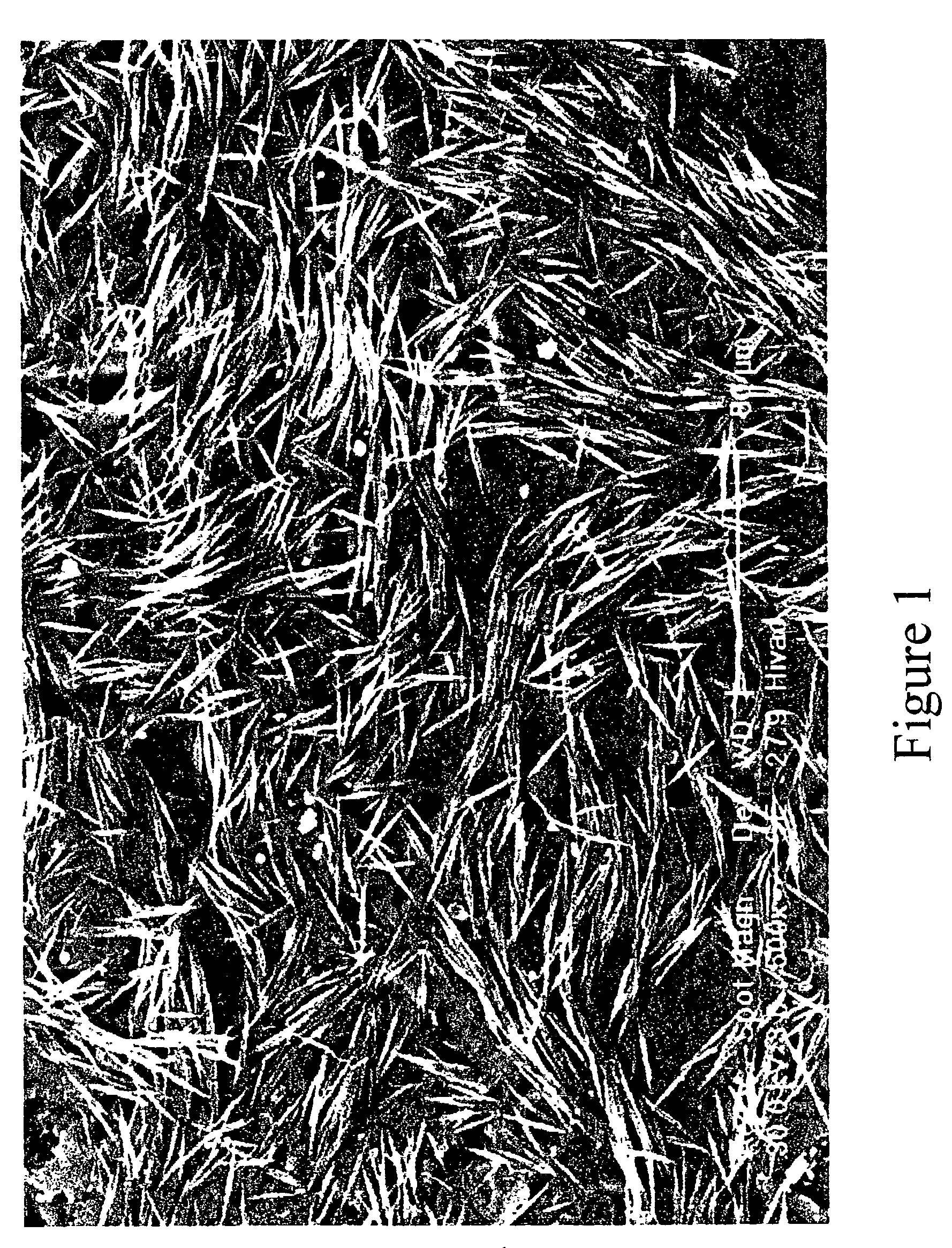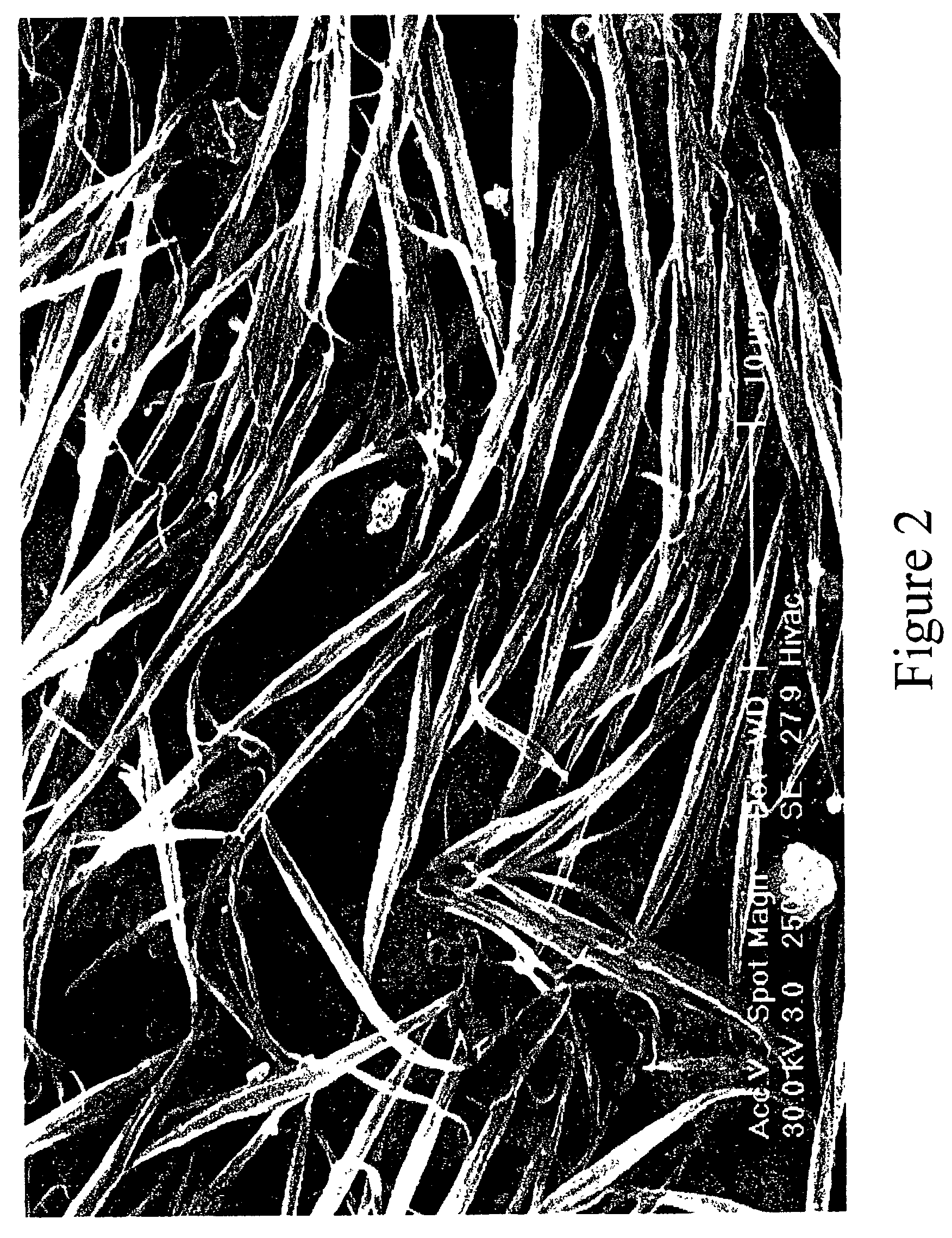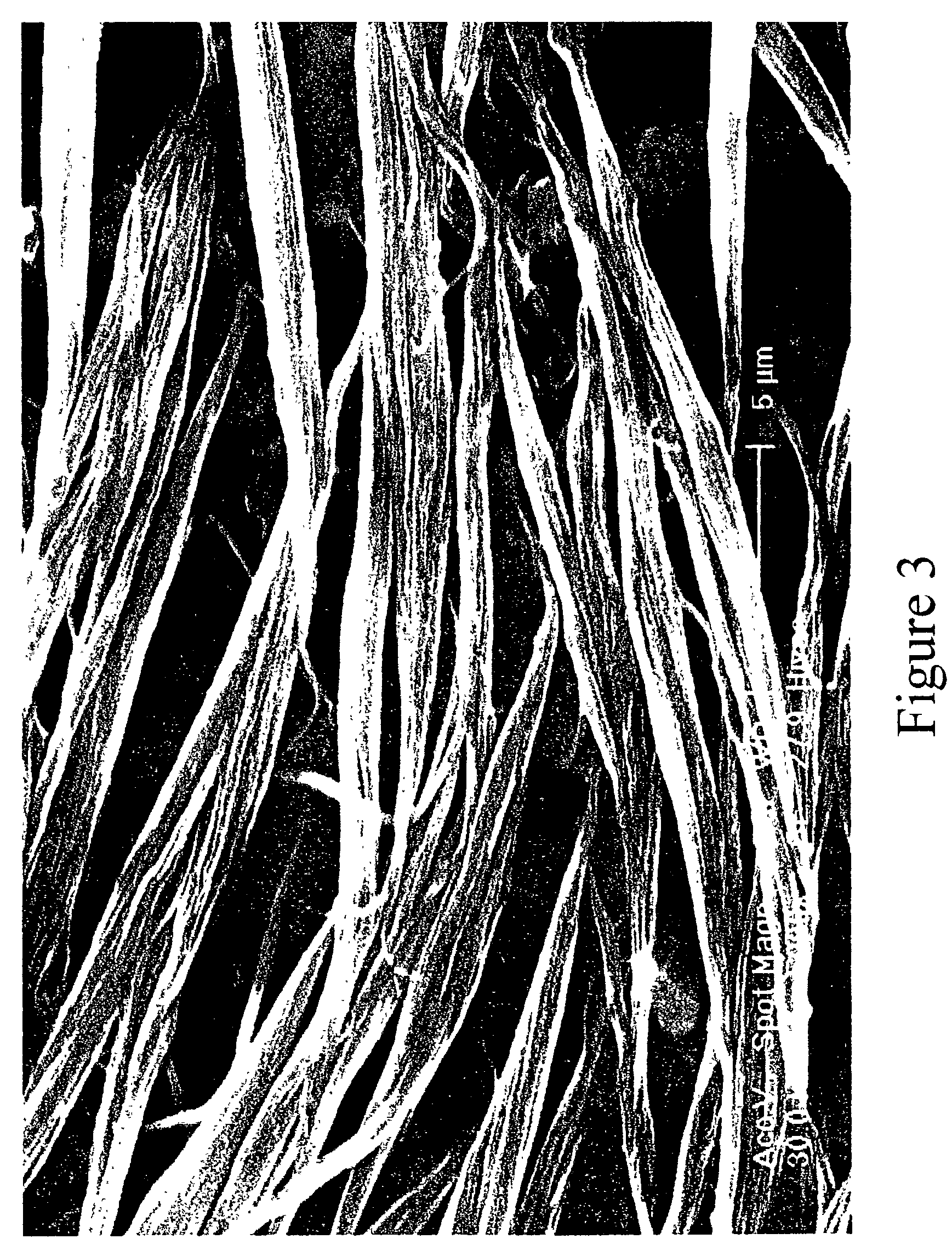Single-wall carbon nanotube alewives, process for making, and compositions thereof
a carbon nanotube and single-wall technology, applied in the field of single-wall carbon nanotube alewives, can solve the problems of difficult dispersion of single-wall carbon nanotubes, and their propensity to tightly self-associate with each other, and achieve the effects of easy dispersion and incorporation, enhanced tensile strength and/or electrical and thermal conductivity
- Summary
- Abstract
- Description
- Claims
- Application Information
AI Technical Summary
Benefits of technology
Problems solved by technology
Method used
Image
Examples
example 1
[0051]This example demonstrates the preparation and grinding of purified single-wall carbon nanotubes.
[0052]Single-wall carbon nanotubes (HiPco™ single-wall carbon nanotubes obtained from Carbon Nanotechnologies, Inc., Houston, Tex.) were purified to remove residual iron metal catalyst particles and amorphous carbonaceous impurities. The purification included a gas-phase oxidation and an aqueous hydrochloric acid treatment. After a hydrochloric acid treatment, the nanotubes were filtered in a Buchner funnel and washed with a continuous and slow stream of deionized water until the filtrate was neutral. After water washing, the purified single-wall carbon nanotubes were washed repeatedly with methanol, filtered and dried in a rotary evaporator.
[0053]Thermogravimetric analysis (TGA) of the dried, purified single-wall carbon nanotubes in air indicated that the remaining iron impurity was less than 0.8 atom %. The dried single-wall carbon nanotubes were ground manually with a mortar and ...
example 2
[0054]This example demonstrates the preparation of a single-wall carbon nanotube / oleum mixture.
[0055]Using ground single-wall carbon nanotube powder, as prepared in Example 1, a mixture of 4 wt % single-wall carbon nanotubes in oleum (H2SO4:20% SO3) was prepared by mixing using a sealed propeller mixer at 130° C. for 12 hours under an inert argon atmosphere.
[0056]No distinct single-wall carbon nanotube alewife aggregates were observed in the 4 wt % single-wall carbon nanotube / oleum mixture. The single-wall carbon nanotube formations consisted of thicker, non-uniform ropes of single-wall carbon nanotubes, approximately 200 to 400 nm in thickness and randomly entangled as a mat.
example 3
[0057]This example demonstrates that single-wall carbon nanotube alewives are not formed in an anhydrous system, such as dry ether.
[0058]0.5 cc of the 4 wt % single-wall carbon nanotube / oleum mixture, prepared in Example 2, was put into about 200 mls of dry ether, followed by stirring and sonication. The resulting single-wall carbon nanotube / dry ether suspension was filtered through a 0.2 micron PTFE filter. The single-wall carbon nanotubes recovered from the filter formed a bucky paper which was peeled off and vacuum dried. No carbon alewives were observed using the procedures of this example.
PUM
| Property | Measurement | Unit |
|---|---|---|
| temperature | aaaaa | aaaaa |
| temperature | aaaaa | aaaaa |
| temperature | aaaaa | aaaaa |
Abstract
Description
Claims
Application Information
 Login to View More
Login to View More - R&D
- Intellectual Property
- Life Sciences
- Materials
- Tech Scout
- Unparalleled Data Quality
- Higher Quality Content
- 60% Fewer Hallucinations
Browse by: Latest US Patents, China's latest patents, Technical Efficacy Thesaurus, Application Domain, Technology Topic, Popular Technical Reports.
© 2025 PatSnap. All rights reserved.Legal|Privacy policy|Modern Slavery Act Transparency Statement|Sitemap|About US| Contact US: help@patsnap.com



